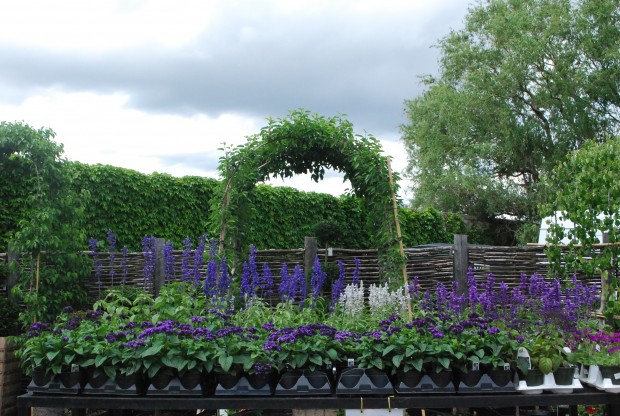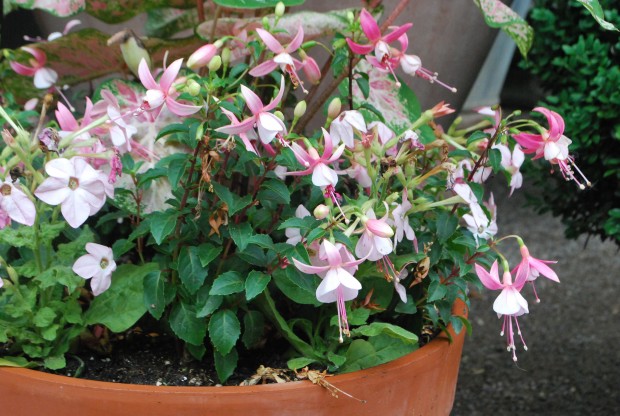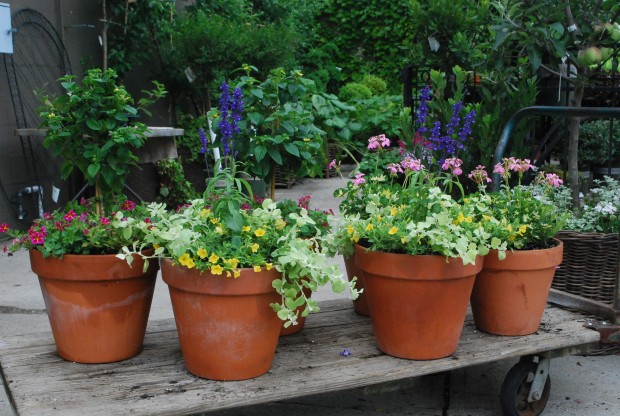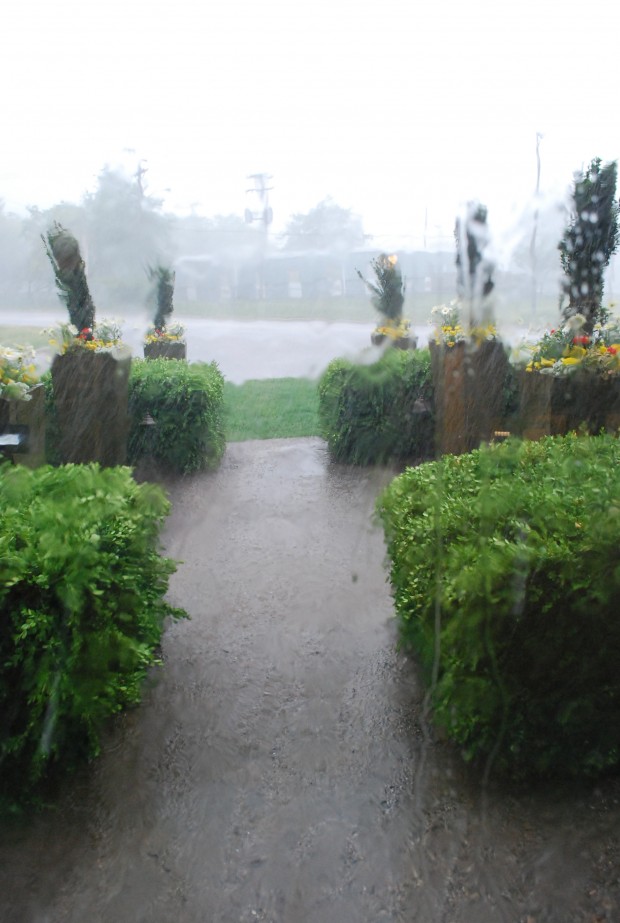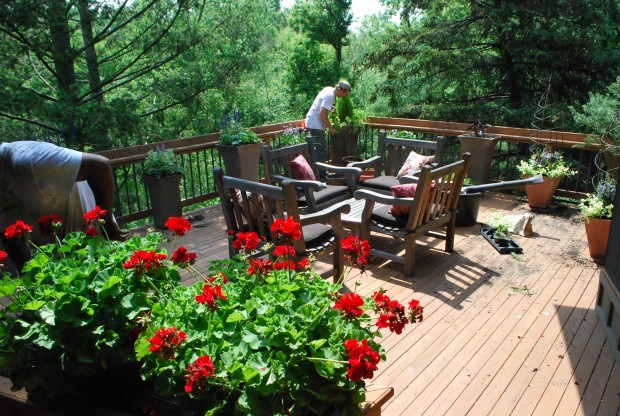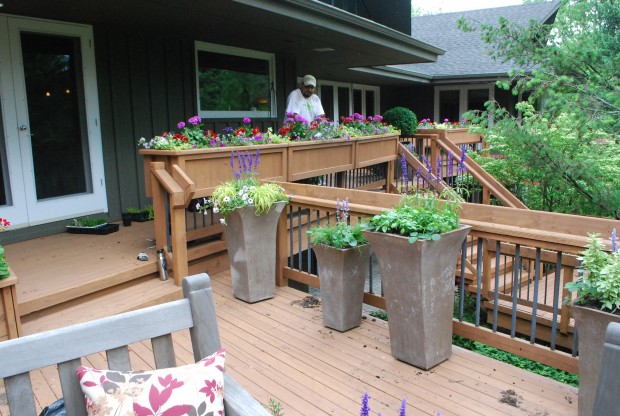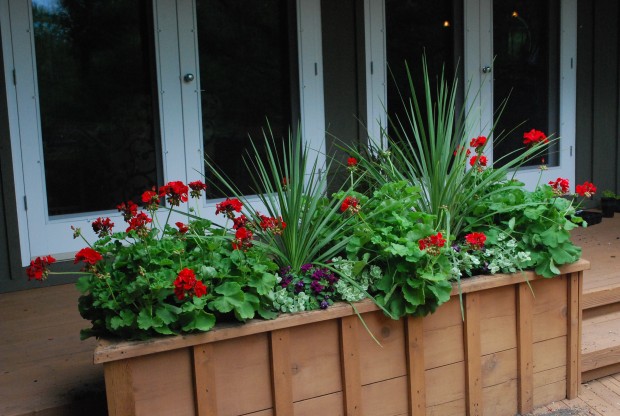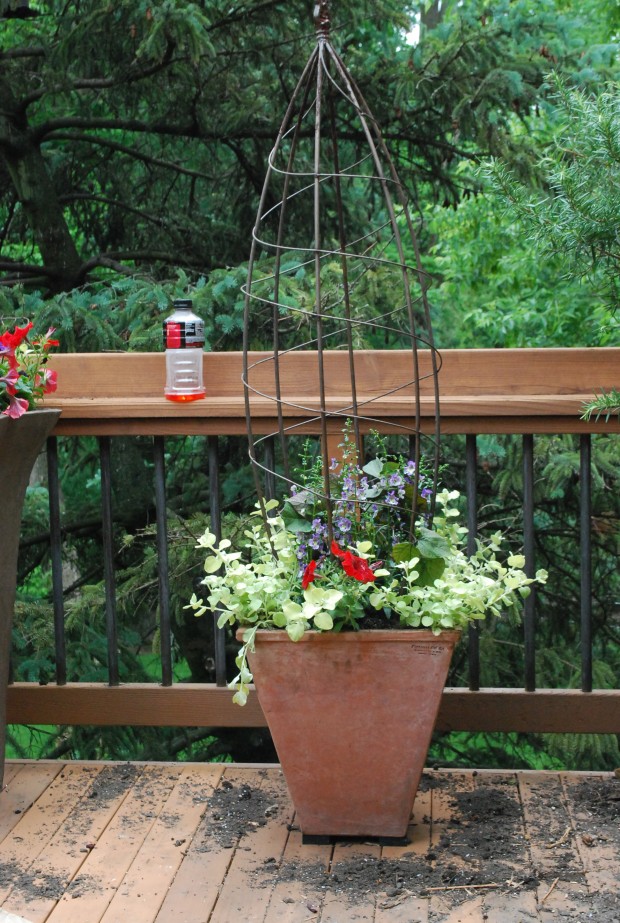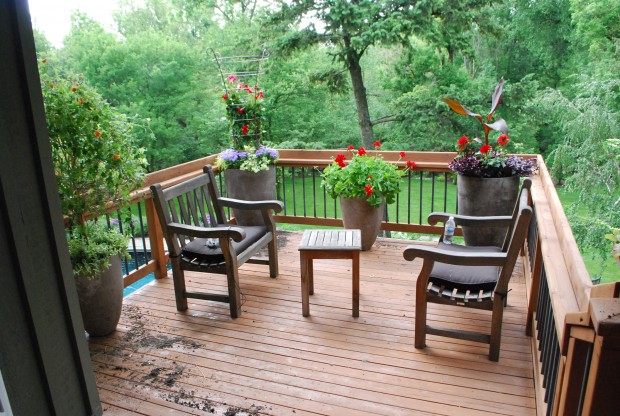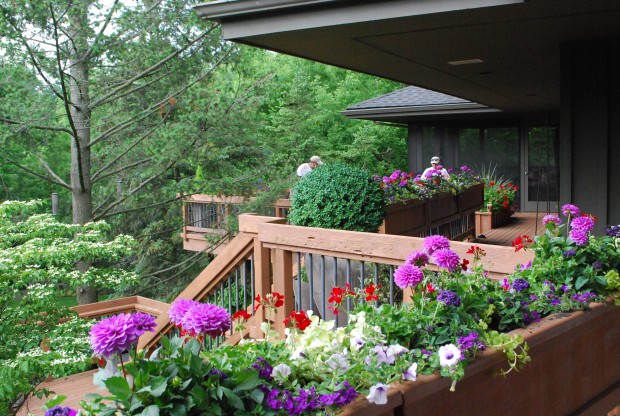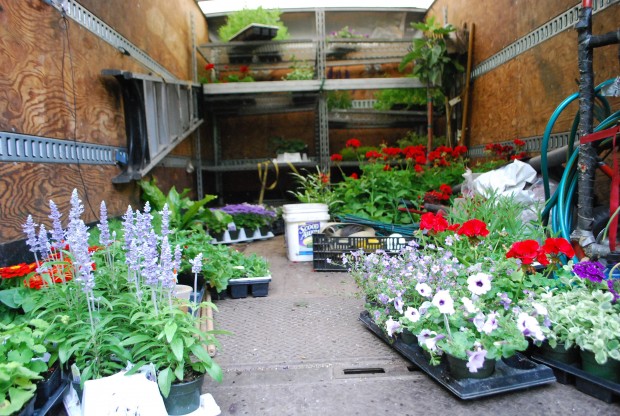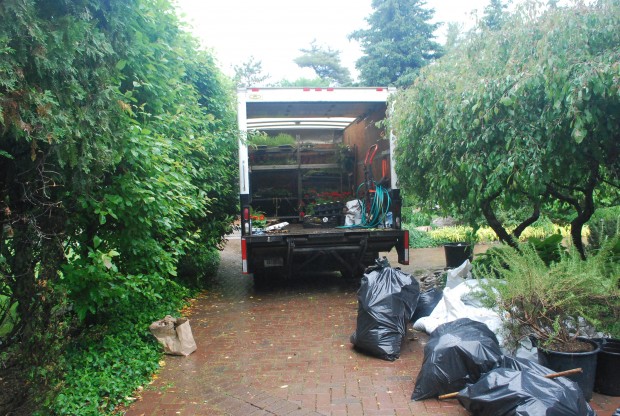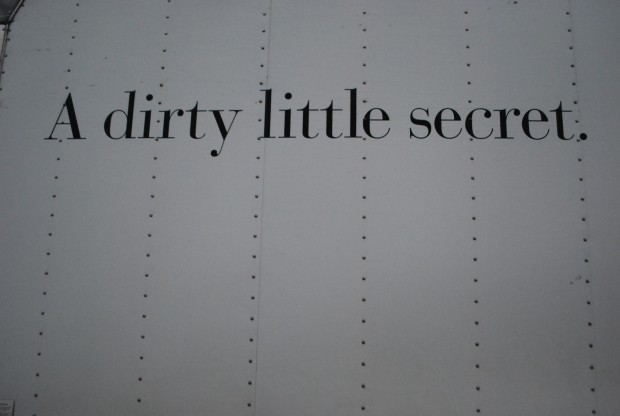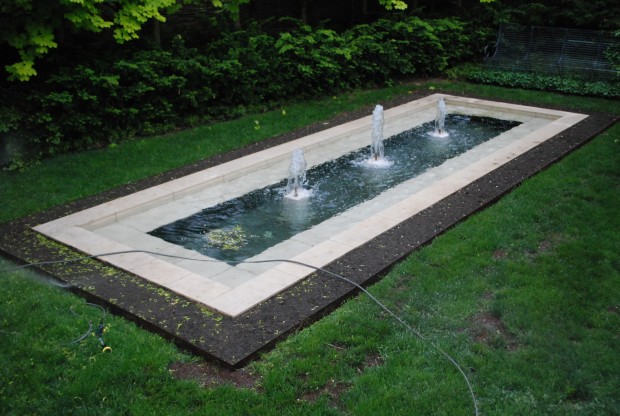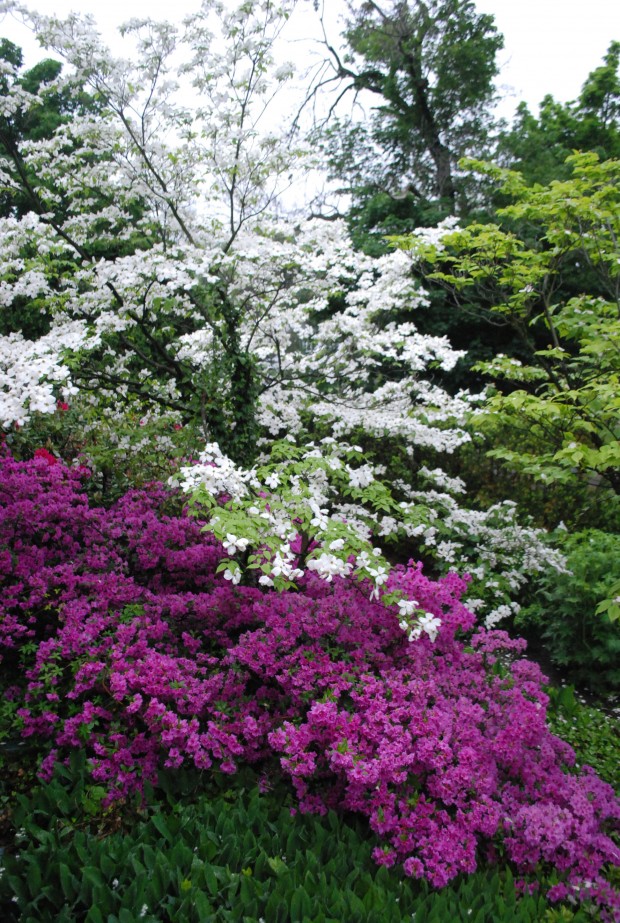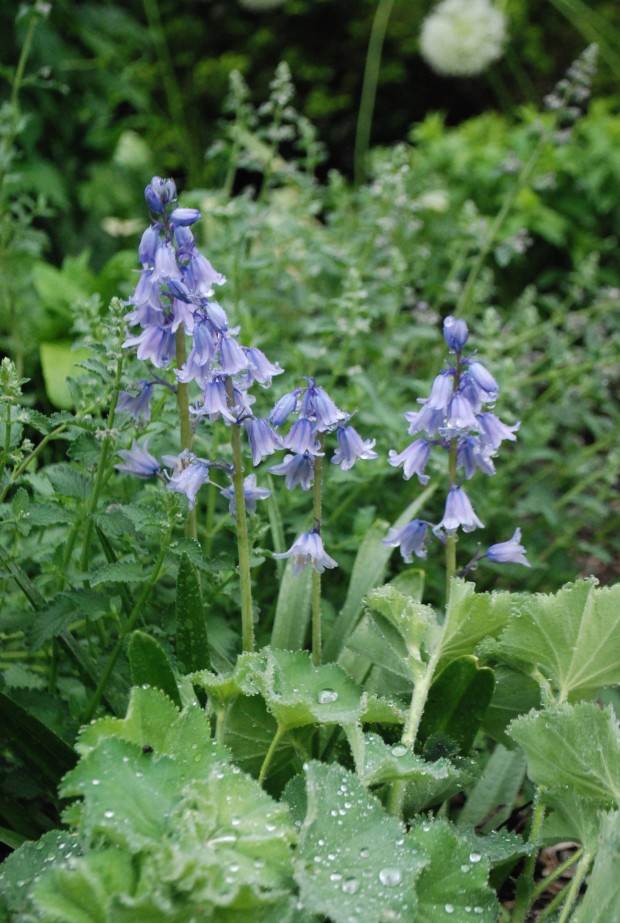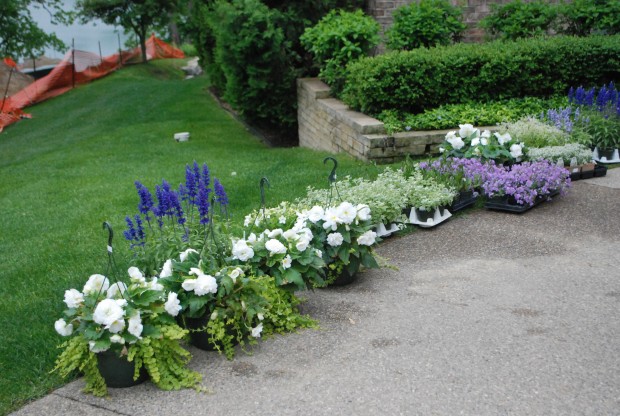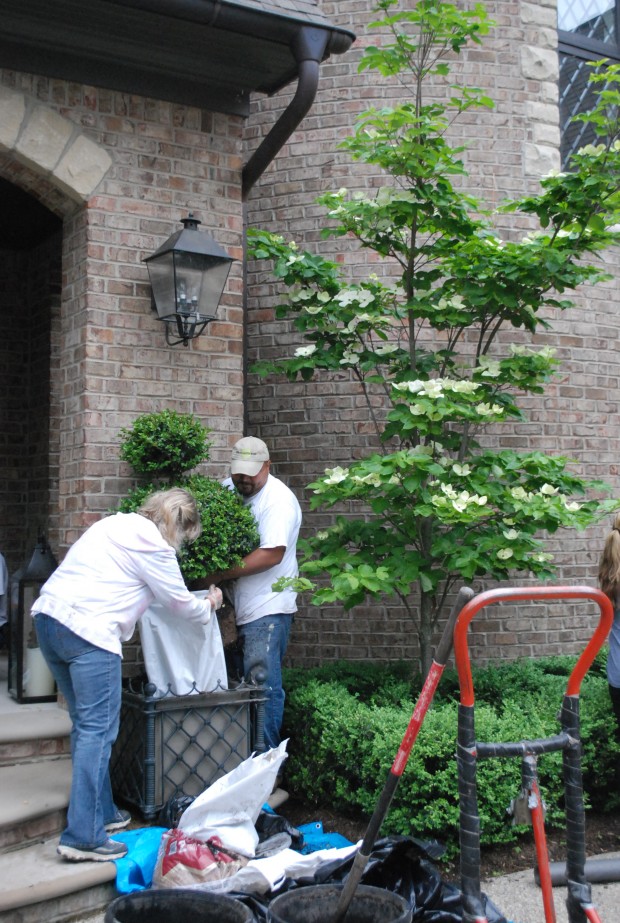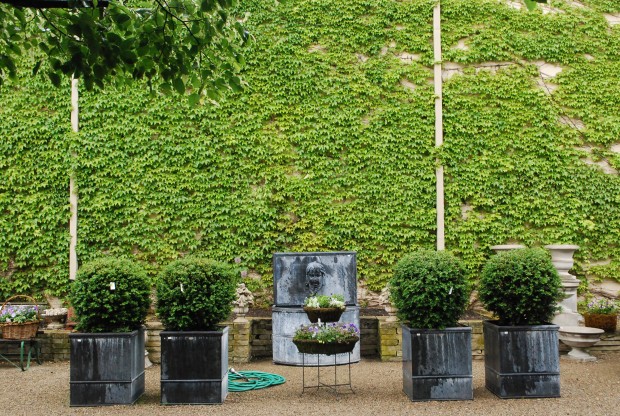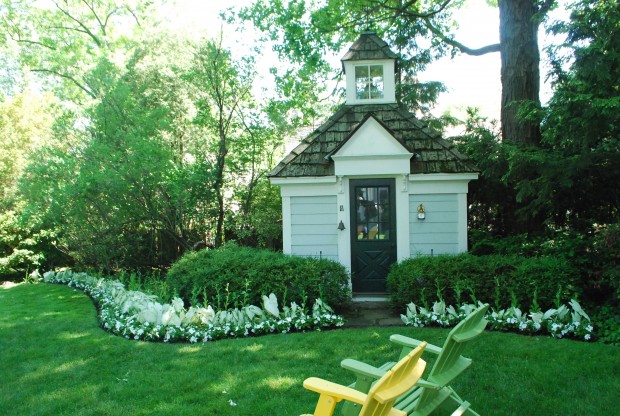 Yes, we are in our second week of planting containers and annuals for summer. Lucky for me that lots of containers to be planted is my idea of a very good time. The fact that this client prefers a primarily green planting means there is opportunity to explore the more subtle design elements such as texture and mass and shape. The playhouse planting is a fair distance from the main terrace. The large white leaves of the June Bride caladiums reads well from a distance, by virtue of both the leaf size and color. White New Guinea impatiens and lime nicotiana provides those caladiums with some flowering company. The curving bed line is a handsome contrast to the boxy geometry of the playhouse.
Yes, we are in our second week of planting containers and annuals for summer. Lucky for me that lots of containers to be planted is my idea of a very good time. The fact that this client prefers a primarily green planting means there is opportunity to explore the more subtle design elements such as texture and mass and shape. The playhouse planting is a fair distance from the main terrace. The large white leaves of the June Bride caladiums reads well from a distance, by virtue of both the leaf size and color. White New Guinea impatiens and lime nicotiana provides those caladiums with some flowering company. The curving bed line is a handsome contrast to the boxy geometry of the playhouse.
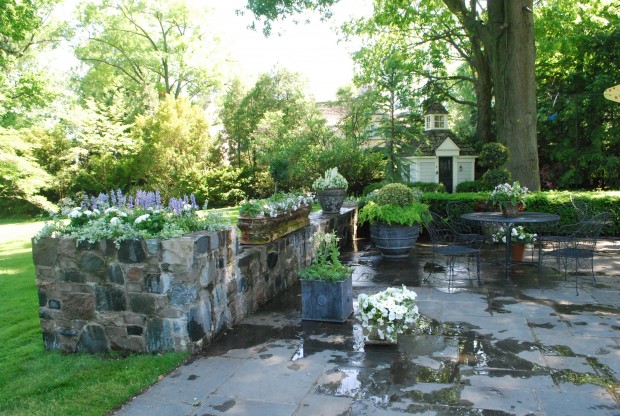 The main terrace is large. There are a number of containers here, in close proximity to each other. Most of the plantings on this container feature green plants, but there is a little punctuation provided by mass of white petunias, and cathedral blue salvia. New this year, a variegated boxwood sphere planted all around with maidenhair fern.
The main terrace is large. There are a number of containers here, in close proximity to each other. Most of the plantings on this container feature green plants, but there is a little punctuation provided by mass of white petunias, and cathedral blue salvia. New this year, a variegated boxwood sphere planted all around with maidenhair fern.
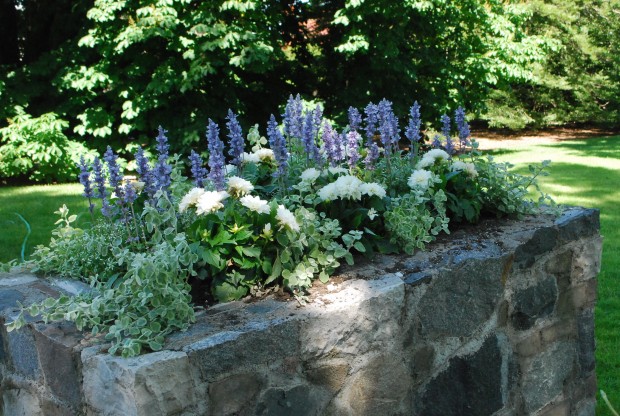 A pair of stone wing walls terminate in a pair of large planters. This year, cathedral blue salvia and euphorbia diamond frost hold the middle slot. Hypnotica white dahlias and variegated licorice on both sides add visual weight and volume. Airy growing plants look all the more delicate, paired with solid and compact plants.
A pair of stone wing walls terminate in a pair of large planters. This year, cathedral blue salvia and euphorbia diamond frost hold the middle slot. Hypnotica white dahlias and variegated licorice on both sides add visual weight and volume. Airy growing plants look all the more delicate, paired with solid and compact plants.
 I don’t usually post pictures of container plantings when I first plant. It is just about impossible to see what a few months of growth will add. A small bay tree on standard will have that gawky trunk obscured by the apple mint planted on either side of it. The idea here? Plan for the eventual size, not the planting size. Annuals in 4″ pots tend to be fairly uniform in size when they are ready to plant. But the natural habit of growth and size will eventually prevail. It is so important to imagine the overall shape that will be created by a group of plants once they grow in. Miniature plants are great for small pots. Big growing plants need to room to grow up and out.
I don’t usually post pictures of container plantings when I first plant. It is just about impossible to see what a few months of growth will add. A small bay tree on standard will have that gawky trunk obscured by the apple mint planted on either side of it. The idea here? Plan for the eventual size, not the planting size. Annuals in 4″ pots tend to be fairly uniform in size when they are ready to plant. But the natural habit of growth and size will eventually prevail. It is so important to imagine the overall shape that will be created by a group of plants once they grow in. Miniature plants are great for small pots. Big growing plants need to room to grow up and out.
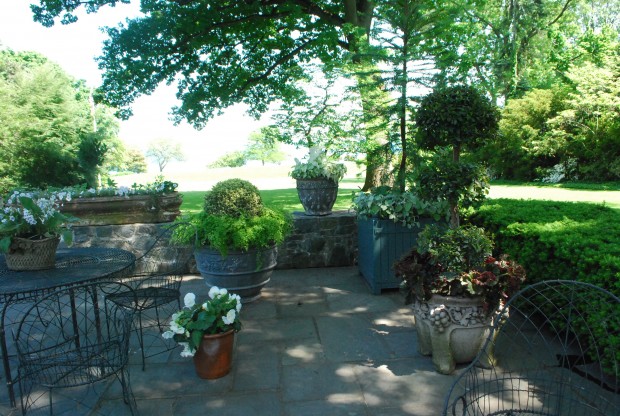 The triple ball eugenia is one of a pair of topiary plants we have over wintered in a greenhouse for a number of years. At the base, we planted 4″ Madame Queen begonias. I like the notion of using a plant that is usually the center of attention as a groundcover. The Madame Queen is aptly named. It will not suffer any amount of overwatering. It requires expert and thoughtful care. In August, they will wreath this pot with a crown of big ruffled leaves and angular white flower spikes. The dignified eugenia will have ruffles.
The triple ball eugenia is one of a pair of topiary plants we have over wintered in a greenhouse for a number of years. At the base, we planted 4″ Madame Queen begonias. I like the notion of using a plant that is usually the center of attention as a groundcover. The Madame Queen is aptly named. It will not suffer any amount of overwatering. It requires expert and thoughtful care. In August, they will wreath this pot with a crown of big ruffled leaves and angular white flower spikes. The dignified eugenia will have ruffles.
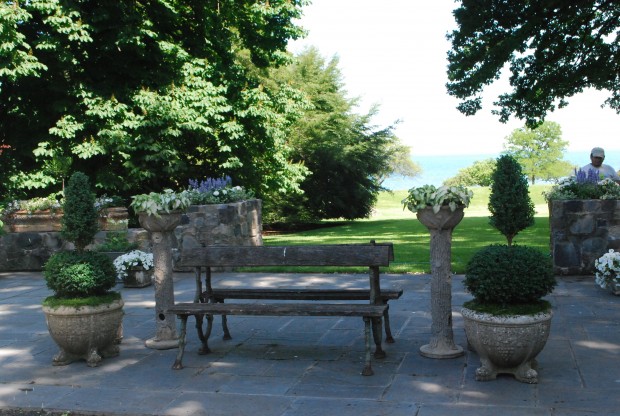 This spot on the terrace belongs to a collection of English antiques. A double sided bench with wrought iron deer legs is flanked by a pair of early 20th century faux bois pots on pedestals, and a pair of stone pots with lion feet. A simple planting does the best justice to this collection. The boxwood topiaries are underplanted with scotch moss. The faux bois urns are planted with dwarf white caladiums.
This spot on the terrace belongs to a collection of English antiques. A double sided bench with wrought iron deer legs is flanked by a pair of early 20th century faux bois pots on pedestals, and a pair of stone pots with lion feet. A simple planting does the best justice to this collection. The boxwood topiaries are underplanted with scotch moss. The faux bois urns are planted with dwarf white caladiums.
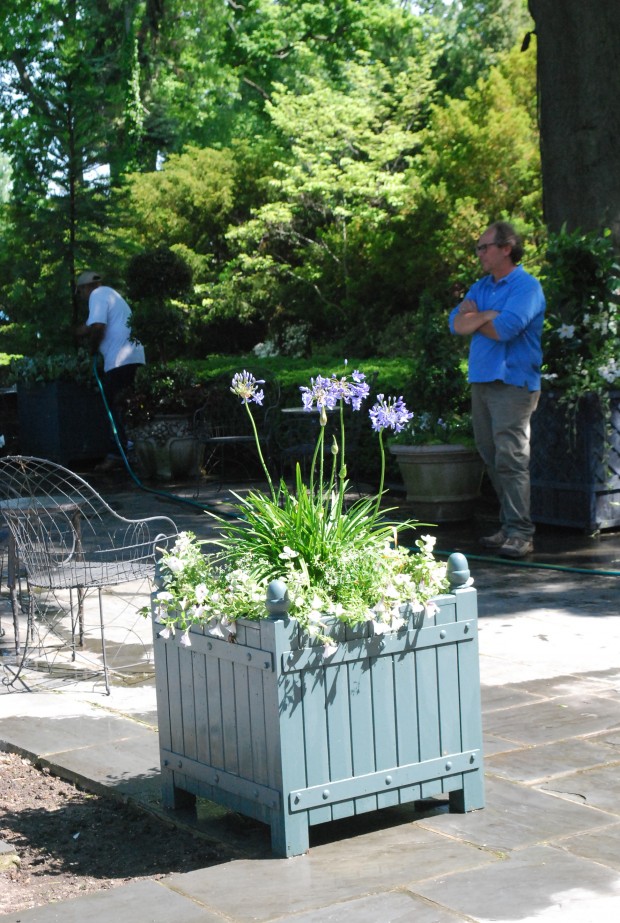 Four painted Belgian boxes have agapanthus planted in the center. I am not worried that they will go out of bloom in another few weeks. The strappy low foliage will be attractive all summer long. The blue veined mini white petunias look a little bedraggled after we soaked the planted box. We water a new planting until we are blue in the face. This helps to settle the soil around the plants. Even and ample moisture is critical for establishing the transplants.
Four painted Belgian boxes have agapanthus planted in the center. I am not worried that they will go out of bloom in another few weeks. The strappy low foliage will be attractive all summer long. The blue veined mini white petunias look a little bedraggled after we soaked the planted box. We water a new planting until we are blue in the face. This helps to settle the soil around the plants. Even and ample moisture is critical for establishing the transplants.
 The white mandevillea got stakes late in the day. Providing a physical support for a vine means that vine will have a shape when it grows out. A mandevillea grown with no structure makes its own interesting and wild statement. Choose your look.
The white mandevillea got stakes late in the day. Providing a physical support for a vine means that vine will have a shape when it grows out. A mandevillea grown with no structure makes its own interesting and wild statement. Choose your look.
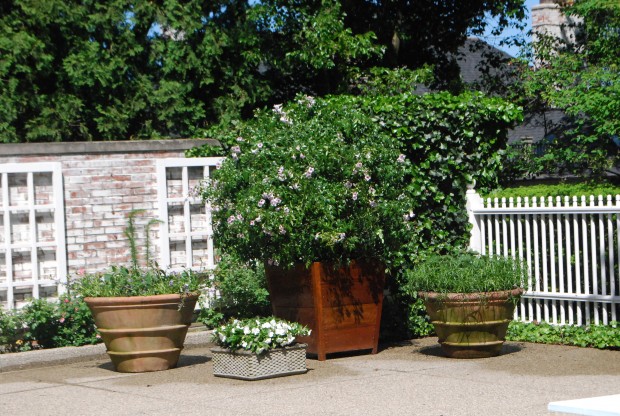 This old topiary Pandorea is coming out of storage at a perfect time-it is beginning to bloom. The pot on the right-a Chicago fig encircled with dwarf King Tut. The contrast of the big fig leaves with the spidery Tut makes for an interesting visual conversation. On the left an elegant feather grass will have a tutu of scaevola and company. Lots of height will contrast with lots of width.
This old topiary Pandorea is coming out of storage at a perfect time-it is beginning to bloom. The pot on the right-a Chicago fig encircled with dwarf King Tut. The contrast of the big fig leaves with the spidery Tut makes for an interesting visual conversation. On the left an elegant feather grass will have a tutu of scaevola and company. Lots of height will contrast with lots of width.
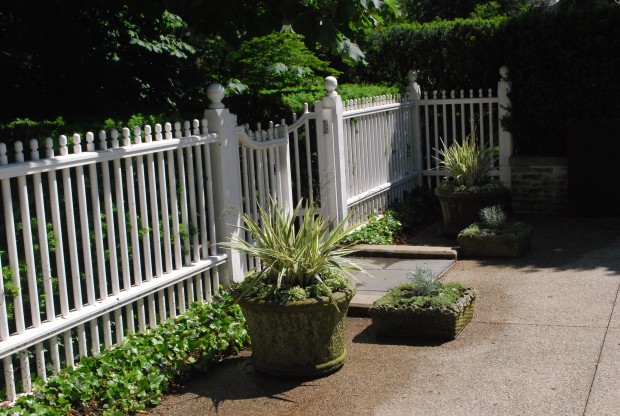
This pair of white variegated dianella were overwintered as well, and are under planted with white polka dot plant. The square stone trays have a centerpiece of helicrysum Icicles, and a border of hens and chicks and thyme. This spot does not get sun all day long, but the plants chosen are tolerant of less than perfect conditions.
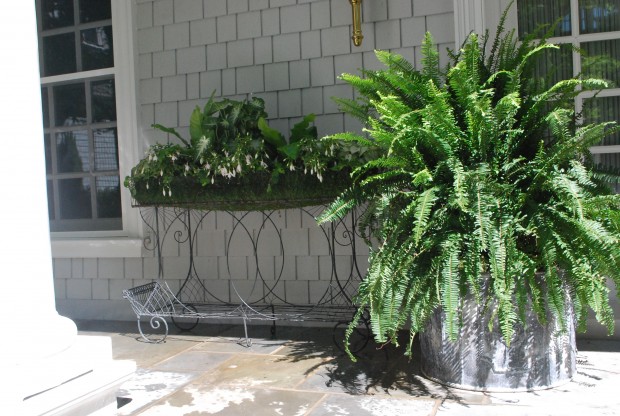 The lead pots on the from porch are planted with Kimberly ferns. The edge of the pot is planted all around with white polka dot plants. That green and white will give the container a very finished look.
The lead pots on the from porch are planted with Kimberly ferns. The edge of the pot is planted all around with white polka dot plants. That green and white will give the container a very finished look.
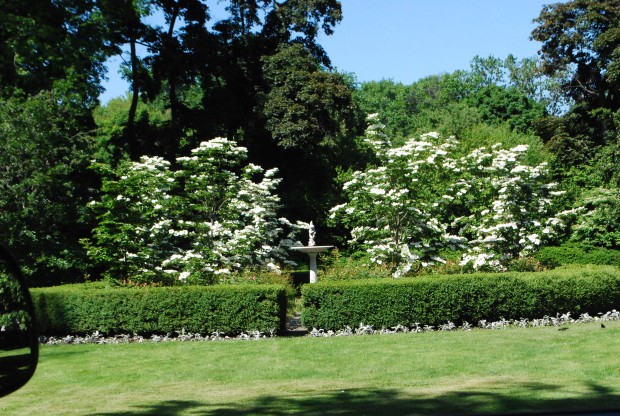 67 containers, and three in ground plantings makes for an entire day’s work for 10 people. One of my favorite parts is planting cirrus dusty miller around a circle of boxwood 35 feet in diameter. Several years ago we planted 8 Venus dogwoods inside that circle. It is a treat to be there at just the right time, to see them blooming.
67 containers, and three in ground plantings makes for an entire day’s work for 10 people. One of my favorite parts is planting cirrus dusty miller around a circle of boxwood 35 feet in diameter. Several years ago we planted 8 Venus dogwoods inside that circle. It is a treat to be there at just the right time, to see them blooming.
